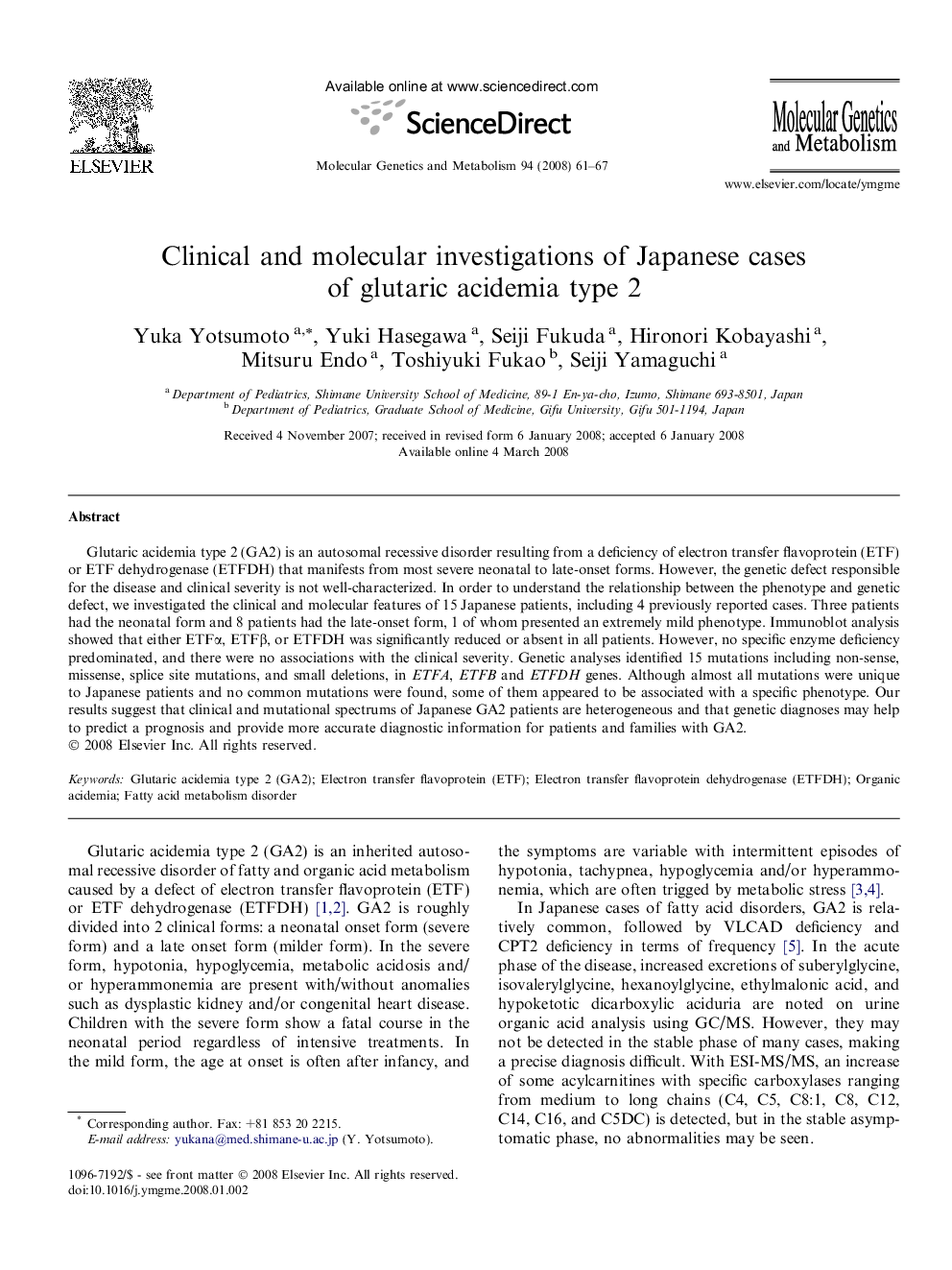| Article ID | Journal | Published Year | Pages | File Type |
|---|---|---|---|---|
| 2000048 | Molecular Genetics and Metabolism | 2008 | 7 Pages |
Abstract
Glutaric acidemia type 2 (GA2) is an autosomal recessive disorder resulting from a deficiency of electron transfer flavoprotein (ETF) or ETF dehydrogenase (ETFDH) that manifests from most severe neonatal to late-onset forms. However, the genetic defect responsible for the disease and clinical severity is not well-characterized. In order to understand the relationship between the phenotype and genetic defect, we investigated the clinical and molecular features of 15 Japanese patients, including 4 previously reported cases. Three patients had the neonatal form and 8 patients had the late-onset form, 1 of whom presented an extremely mild phenotype. Immunoblot analysis showed that either ETFα, ETFβ, or ETFDH was significantly reduced or absent in all patients. However, no specific enzyme deficiency predominated, and there were no associations with the clinical severity. Genetic analyses identified 15 mutations including non-sense, missense, splice site mutations, and small deletions, in ETFA, ETFB and ETFDH genes. Although almost all mutations were unique to Japanese patients and no common mutations were found, some of them appeared to be associated with a specific phenotype. Our results suggest that clinical and mutational spectrums of Japanese GA2 patients are heterogeneous and that genetic diagnoses may help to predict a prognosis and provide more accurate diagnostic information for patients and families with GA2.
Keywords
Related Topics
Life Sciences
Biochemistry, Genetics and Molecular Biology
Biochemistry
Authors
Yuka Yotsumoto, Yuki Hasegawa, Seiji Fukuda, Hironori Kobayashi, Mitsuru Endo, Toshiyuki Fukao, Seiji Yamaguchi,
